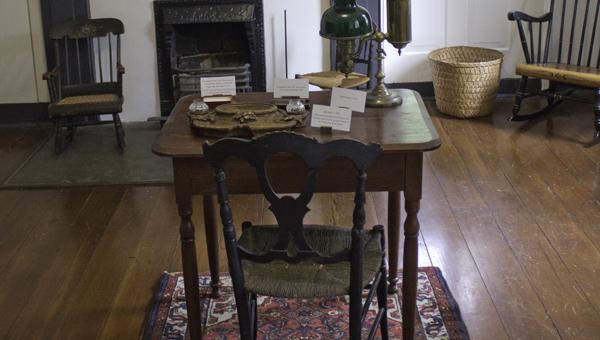She did so with the help of Bill Allen, collections technician for The University of Alabama museums and Samantha Jacobi, Gorgas House Museum assistant. Nelson said he acquired the desk from an estate sale in Columbus, Mississippi.
“To me, the most unusual aspect of the desk was the extreme atypical length and top cabinet section which overhangs both ends of the desk to maximize space,” Nelson said.
Another key player in getting the desk to the exhibit was Mary Bess Paluzzi, Associate Dean for Special Collections, as she was the facilitator in the donation.
Allen said the recreation of the post office in the Gorgas House is a pivotal move for the museum.
“It’s a way of tying the house a little more closely not just to the Gorgas family itself, but to the history of the University,” Allen said.
The home was the first building erected on the University campus in 1829, originally serving as a dining hall for students and a hotel for faculty and visitors on the second floor. It was one of only a few structures to survive the burning of the campus by Union General Croxton and his soldiers in April of 1865.
In 1878 Josiah Gorgas, Union-born but a former Confederate general, accepted the offer as president of The University of Alabama. After only one year of service, his health forced him to resign the position. As a retirement present, the Board of Trustees gave President Gorgas the house, formerly known as Steward’s Hall, as a residence and assigned him the position of Head Librarian. His wife, Amelia, took the position as matron of the University infirmary and later as postmistress. Both the infirmary and the post office were located on the ground floor of their home.
“The Gorgas House Museum is an important tool and resource for the University as the oldest building on campus,” Ellington said. “It has seen all the history of the great opportunity for the students to get a hands-on with the experience of history.”









